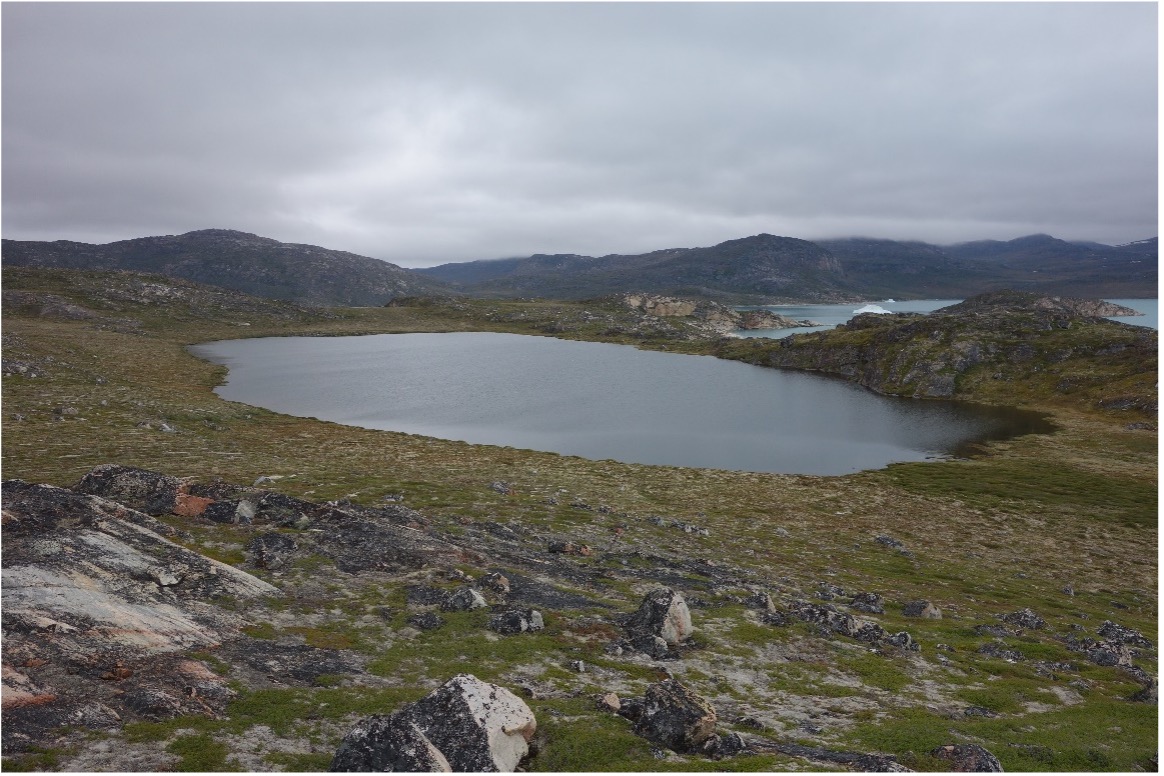Geography Available Research Project
Quantitative reconstruction of Atlantic Water variability around the Greenland Ice Sheet
Over the last few decades many of the major outlet glaciers draining the Greenland Ice Sheet (GIS) have undergone a period of acceleration, thinning and retreat (Kochtitzky and Copeland, 2021). Supply of meltwater and icebergs from the GIS to the ocean have important implications for global sea level and also large-scale ocean circulation and, hence, global climate. The presence and flow of relatively warm Atlantic Water on the Greenland continental shelf and into many fjords has been linked to ice margin instability. However, the relatively short time series of direct observations and an inability to accurately reconstruct past ocean temperatures make it difficult to fully understand the interaction between the oceans and the ice sheet. This hinders our ability to predict potential future response of the GIS to ongoing changes in the North Atlantic Ocean.
In this project we aim to address this by investigating the longer term interaction between the ocean and GIS based on core material collected and analysed during recent expeditions to the northeast Greenland ice stream (NEGIS). Initial results have identified qualitative variability in Atlantic Water flux to the NEGIS margin (based on benthic foraminiferal assemblages) as well as variation in ice stream stability (e.g. Syring et al. 2020). In this project we aim to develop a more quantitative approach to estimating Atlantic Water temperatures critical for ice sheet models. This aim will be addressed based on a dual approach:
Approach 1: Development and application of the geochemical proxy Mg/Ca (measured on the calcareous shells of benthic foraminifera). This technique has not previously been applied to the continental shelf of Greenland, but has the potential to provide quantitative estimates of ocean temperature back through time (cf. Moffa-Sanchez et al., 2014).
Approach 2: Using a recently put together database of the modern distribution of benthic foraminifera from sites around Greenland develop statistical models to quantitatively estimate changes in ocean temperature.
Project Inquiries & Applications
For more information about this project or to discuss your research ideas contact lead supervisors: Dr Jerry Lloyd and Dr Paola Moffa-Sanchez

RV Polarstern in front of the ice shelf of NEGIS in northeast Greenland (2016)
Key references:
Kochtitzky, W., & Copland, L. (2022). Retreat of Northern Hemisphere marine-terminating glaciers, 2000–2020. Geophysical Research Letters, 49, e2021GL096501. https://doi.org/10.1029/2021GL096501
Moffa-Sánchez, P., Hall, I., Barker, S., Thornalley, D., Yashayaev, I. 2014. Surface changes in the eastern Labrador Sea around the onset of the Little Ice Age. Paleoceanography 29, 160-175.
Syring, N., Lloyd, J.M., Stein, R., Fahl, K., Roberts, D.H., Callard, L., O'Cofaigh, C. 2020. Holocene interactions between glacier retreat, sea-ice formation and Atlantic Water advection at the inner Northeast Greenland continental shelf. Paleoceanography and Paleoclimatology, 35, e2020PA004019. DOI: 10.1029/2020PA004019.
Available Research Projects
See all of the currently available research projects that are recruiting students.
Research Masters
Our Research Masters provides an opportunity to develop your research expertise and advanced skills. Pursue your own top or collaborate on a project designed by a supervisor in our world-leading research environment.
Contact Us
Founded in 1928, the Department of Geography at Durham University is one of the leading centres of geographical research and education in the world.
Department of Geography
Postgraduate Study
Durham University
Lower Mountjoy
South Road, Durham
DH1 3LE, UK
Tel: +44 (0)191 33418000


/prod01/prodbucket01/media/durham-university/departments-/geography/Matt_Couchmann-3872X1296.JPG)




